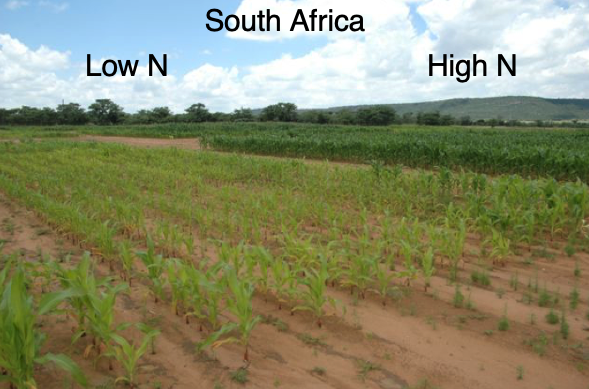
Low N field trials in South Africa
Authors
Source
Annals of Botany https://doi.org/10.1093/aob/mcab104
Download Options
Open Access from Annals of Botany
Abstract
Background and Aims: The utility of root hairs for nitrogen (N) acquisition is poorly understood.
Methods: We explored the utility of root hairs for N acquisition in the functional-structural model SimRoot and with maize genotypes with variable root hair length (RHL) in greenhouse and field environments.
Key Results: Simulation results indicate that long, dense root hairs can improve N acquisition under varying N availability. In the greenhouse, ammonium availability had no effect on RHL and low nitrate availability increased RHL, while in the field low N reduced RHL. Longer RHL was associated with 216% increase in biomass and 237% increase in plant N content under low N conditions in the greenhouse and a 250% increase in biomass and 200% increase in plant N content in the field compared with short RHL phenotypes. In a low N field environment, genotypes with long RHL had 267% greater yield than those with short RHL. We speculate that long root hairs improve N capture by increased root surface area and expanded soil exploration beyond the N depletion zone surrounding the root surface.
Conclusions: We conclude that root hairs play an important role in nitrogen acquisition. We suggest that root hairs merit consideration as a breeding target for improved N acquisition in maize and other crops.

